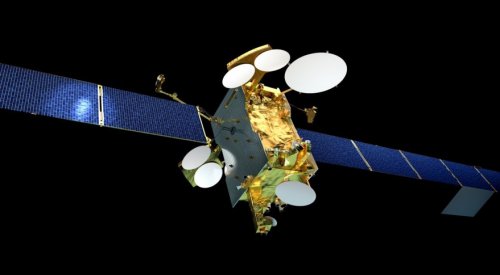WASHINGTON — Seeking to restore capacity for customers impacted by a satellite malfunction earlier this year, fleet operator SES is swapping launches between SpaceX and Arianespace, the company announced today.
Hawthorne, California-based SpaceX, previously contracted to launch SES-14, will instead launch SES-12. Arianespace of Evry, France, will launch SES-14 on an Ariane 5 rocket during the first quarter of 2018, saving “a couple of weeks” on bringing the satellite into service, according to SES spokesperson Markus Payer.
Both satellites were expected to launch this year when SES signed the launch agreements in 2015. Payer said the Ariane 5 launch is in the earlier half the first quarter of 2018, while the Falcon 9 launch is in the latter half.
SES-14 is a replacement for NSS-806, a satellite that lost the use of 12 transponders this summer. Payer said SES is still investigating what caused the transponder failure on the Lockheed Martin-built satellite that, launched in 1998, is operating seven years past its 12-year design life.
NSS-806 is the second satellite in SES’s fleet this year to suffer a major malfunction; AMC-9, a 14-year-old satellite from Thales Alenia Space, lost contact June 17. Despite regaining some contact with the satellite weeks later, SES has replaced its commercial services with capacity on other satellites in the company’s fleet, Payer said.
Payer said SES did pay a “marginal” fee for swapping the satellites SpaceX and Arianespace will carry.
SES-14 and SES-12 are both all-electric propulsion satellites from European manufacturer Airbus Defence and Space. Electric propulsion, which now counts for roughly a quarter of commercial telecom satellites, adds less mass to a satellite than traditional chemical propulsion. Operators can use that mass savings for larger revenue-generating payloads or to reduce a spacecraft’s size for a lower cost launch. The tradeoff is longer orbit-raising times. SES said both SES-14 and SES-12 are expected to take four to six months to reach the geostationary arc. By comparison, chemical propulsion is typically measured in days.
SpaceX’s new passenger, SES-12, is the largest satellite SES has ever ordered. Weighing some 5,300 kilograms, the satellite carries 68 high-power Ku-band transponders and eight Ka-band transponders. Once in orbit, SES-12 will replace NSS-6, joining SES-8 at 95 degrees east.
SES-14, now Arianespace’s to launch, is expected to have a lift-off weight of 4,200 kilograms, and an electric power of 16 kilowatts. From the 47.5 degrees west orbital slot, the satellite brings traditional and high-throughput capacity to Latin America, including growth capacity. A NASA space weather payload, the Global-Scale Observations of the Limb and Disk (GOLD) instrument, is also on the satellite.
Share with your friends

(0) Comments
This article comments are currently no :(